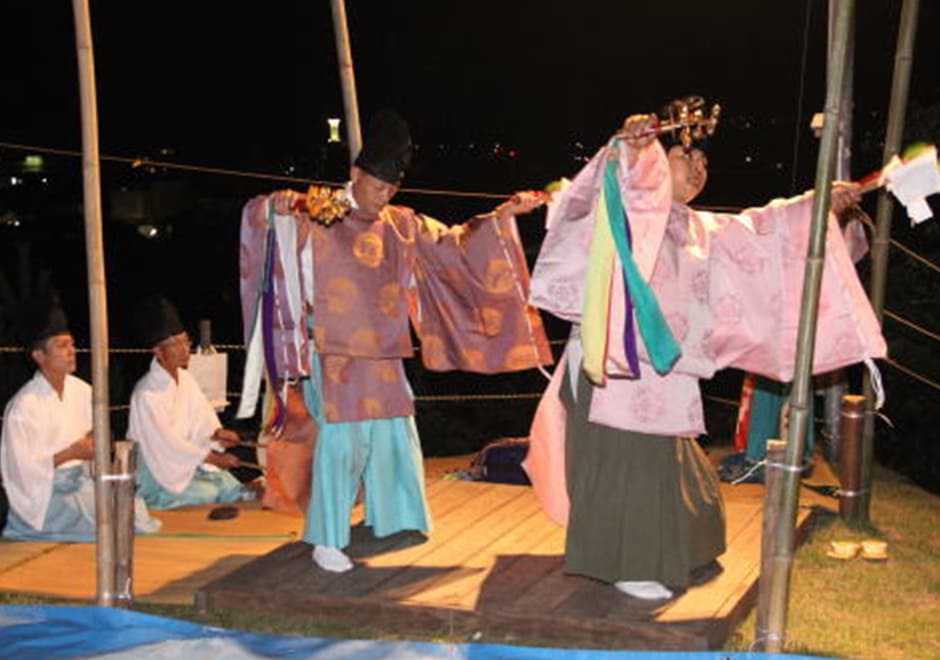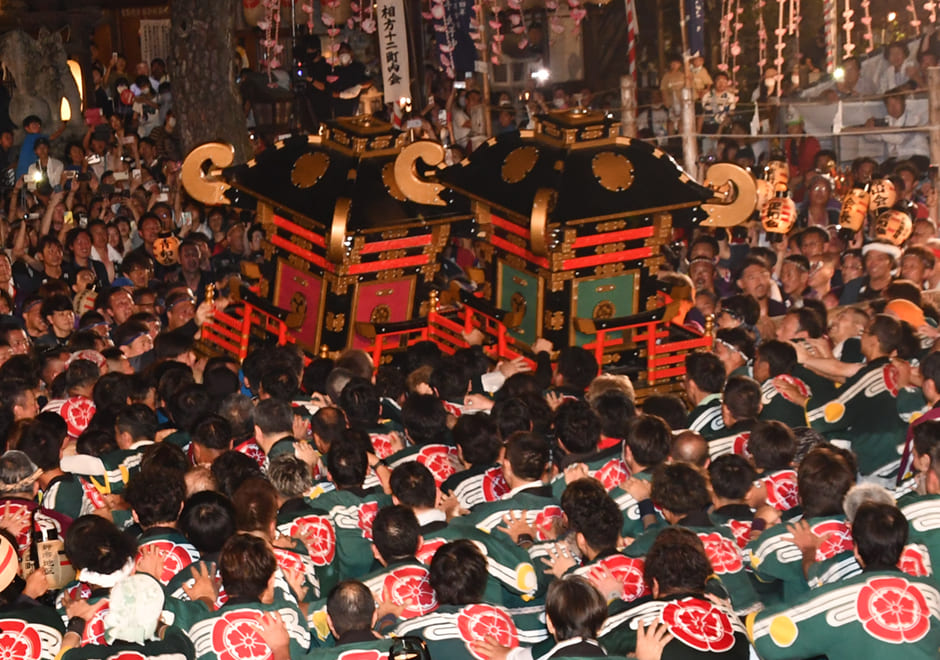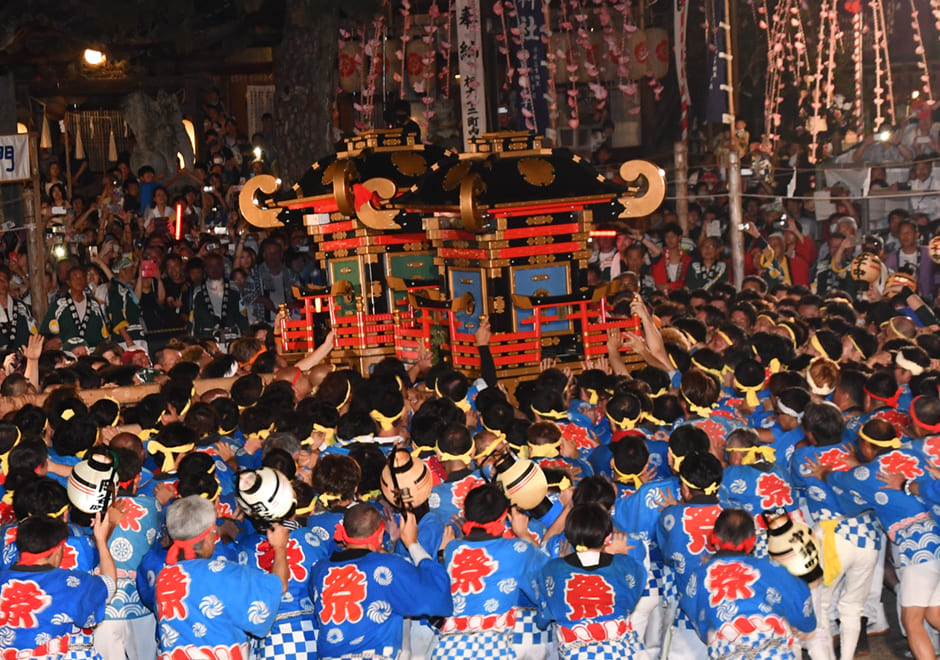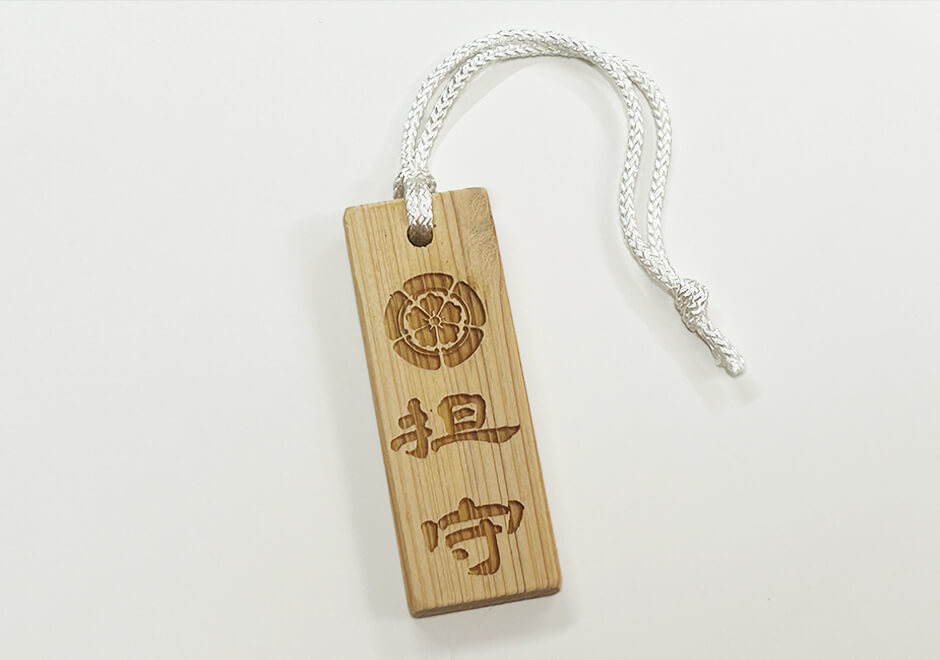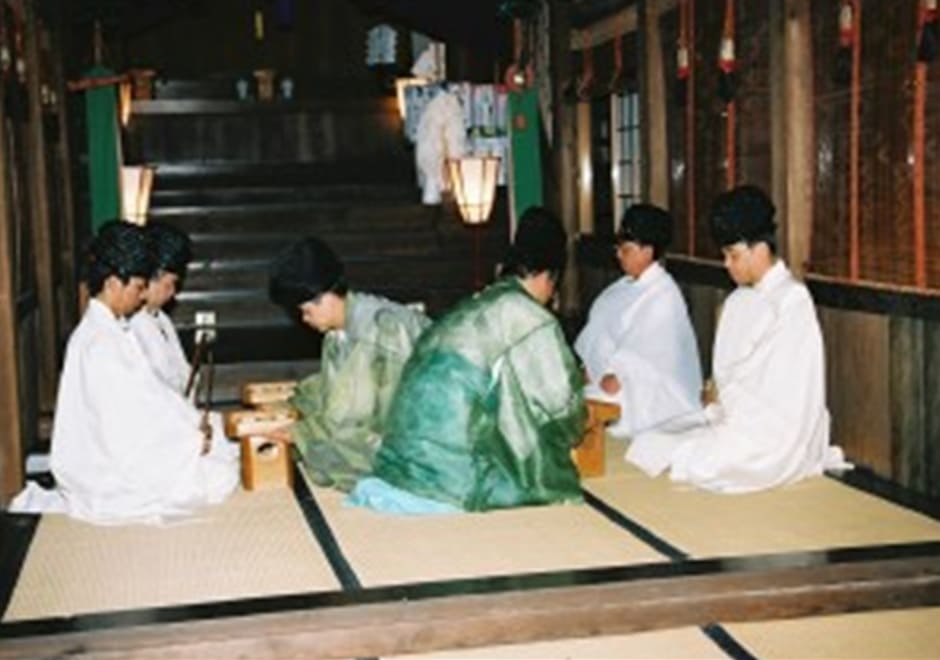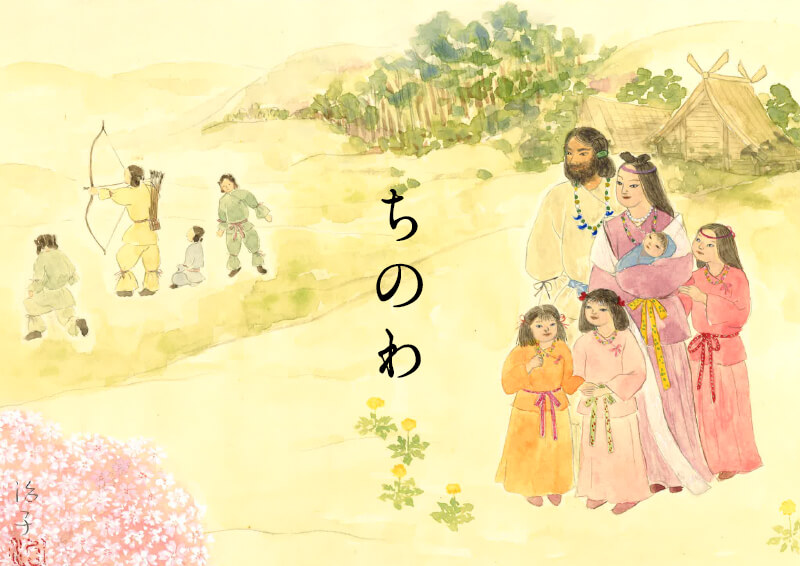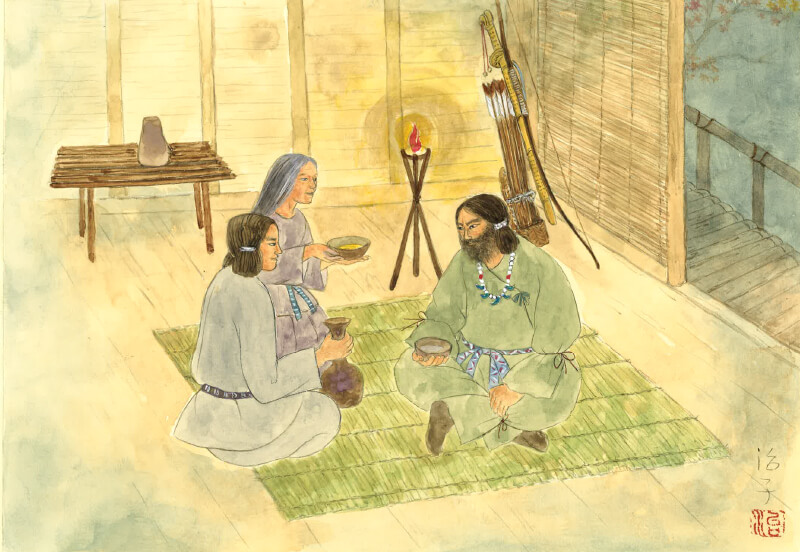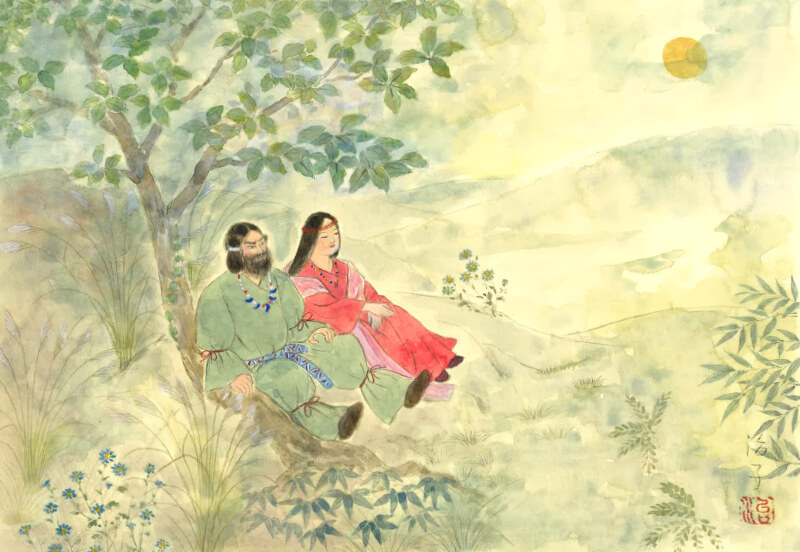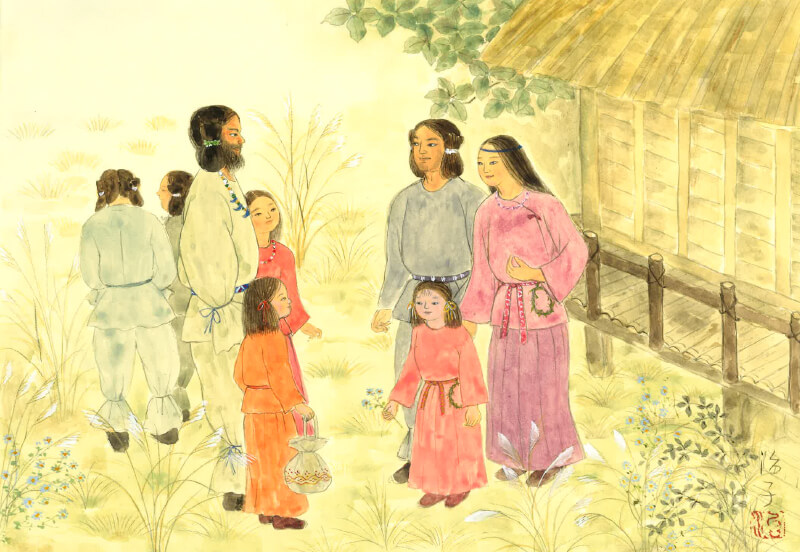年間行事Events
素盞嗚神社では、
一年を通して様々なお祭りや行事が行われています。
日本全国に広がっている祇園祭や茅輪くぐりの
発祥の地と言われています。
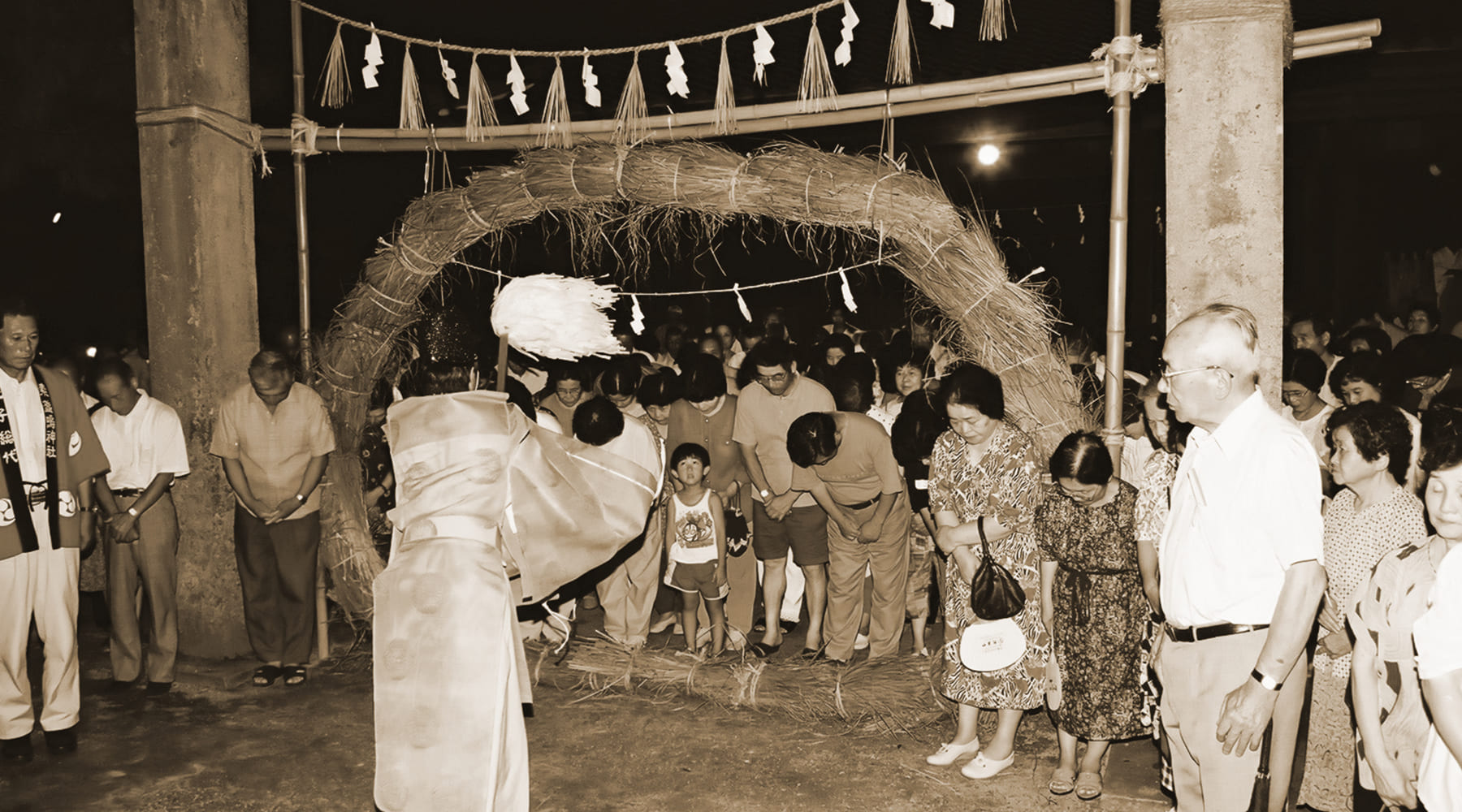
-
- 1月
-
元旦祭
一日午前零時より元旦祭
初詣にお越しください
御守・縁起物を準備しております
-
- 2月
-
節分祭(豆撒き)
厄年・年男・年女の方々が厄除祈願をし、豆まきをしております。
個人・団体の申し込みをお待ちしております
-
- 5月
-
蘇民神社・疱瘡神社祭
疫病除けの神様をお祀りしております
-
- 7月
-
素盞嗚神社例大祭(祇園祭)
1日目 前夜祭
2日目 例祭・神輿巡行・御旅所
3日目 神輿巡行・神輿合せ
-
- 8月
-
茅の輪くぐり大祓式
茅の輪をくぐり、素盞嗚尊の御神徳をいただき、
健康に過ごしましょう
-
- 10月
-
天満宮例祭・合格祈願祭
-
- 11月
-
七五三祭
お子様の健やかな成長を祈願いたします
-
- 12月
-
大晦日年越祭
祇園祭Gionsai
当神社の例大祭「祇園祭」が、
いつ頃始まったものかを示す古文書は残念ながら現存せず、
その始まりの時期は定かではありません。
奈良時代の初頭より我が国では
疫病の流行や大地震により数多くの人々が亡くなり
「死」に対して強烈な畏怖心をいだくようになりました。
当時、疫病の流行や自然災害は、
この世に恨みを持って亡くなった人たちの祟りによるものと考えられました。
そこで、いつ襲い来るか計り知れぬ災害から逃れ、
疫病に罹らぬようにするため、
死者の怨霊を鎮めなだめる儀式
「御霊会(ごりょうえ)」が 行われるようになりました。
これが後に 「祇園信仰=祇園祭」 へとつながっていきます。
Gion Maturi(Gion Festival)
Since there are no ancient documents describing its origins, it is unclear when the shrine’s Gion Matsuri began.
The 42nd volume of the chronicle known as Seibimeiku says that on June 14 in the first year of Tenroku, during the reign of Emperor Enyu, the Goryoe festival began. From that year on, shrines dedicated to Susano’o no Mikoto, which were called Gionsha, began to hold the Gion Matsuri.
The festival was begun at this shrine around the middle of the Heian Period (970 AD).
In the case of Yasaka Shrine in Kyoto, in the 18th year of Jogan the Buddhist priest Juzen Ennyo received a divine message from Gozu Tenno (Susano’o no Mikoto) and transferred the spirit of Gozu Tenno from Hiromine in Harima to Kyoto and enshrined the spirit there.
In the first year of Tenroku (970 AD) epidemics and natural disasters occurred throughout Japan. As a result, harvests were poor, and the people prayed that all the disturbances would subside. It was thought that the plagues were the result of the curses of those who had fallen from political power. In order to appease evil spirits, 66 halberds were prepared and portable shrines were carried from Gion Shrine to Shinsenen.
This is believed to be the origin of the Gion Festival.
Gion Shinko(Gion Faith)
As Buddhism gained a large number of followers in the Nara Period, Shinto-Buddhism syncretism, known as Shinbutsu Shugo, originated, and honjido (Buddhist halls) were built in shrine compounds.
In the middle of the Heian Period the theory known as Honji Suijaku, which refers to the manifestation of Buddha in the temporary form of a Shinto deity that tries to save people, spread throughout Japan. From this period social unrest and convulsions of nature occurred, epidemics became prevalent and people were filled with fear and anxiety. Reflecting this social unrest, the Gion Shinko originated in order to pacify vengeful spirits and quell epidemics. This faith combined worship of the most fearful and strongest Buddhist and Shinto deities, Gozu Tenno and Susano’o. Gozu Tenno, had a head like a bull and guarded a monastery called Gion Shoja where Buddha lived. Susano’o no Mikoto successfully slew an eight-headed dragon Yamata no Orochi after being banished from the Plain of High Heaven. People believed that Susano’o no Mikoto and Gozu Tenno would overcome vengeful spirits, epidemics and devils no matter how fearsome they might be. This was indeed the new faith people had been seeking.
It is widely believed among scholars that the birthplace of Gion Shinko is Susano’o Shrine situated in Shin-ichi, Hiroshima Prefecture. We have clear evidence of this as follows:
“Kibi no Makibi was a man of unequaled intelligence in those days. In the fifth year of Tempyo he returned to Japan and met Gozu Tenno (Susano’o no Mikoto) in Banshu. It is written in an ancient document called Banyoshi that Kibi no Makibi transferred the spirit of Susano’o no Mikoto from Bingo to Hiromine, Harima (present-day Hyogo Prefecture).”
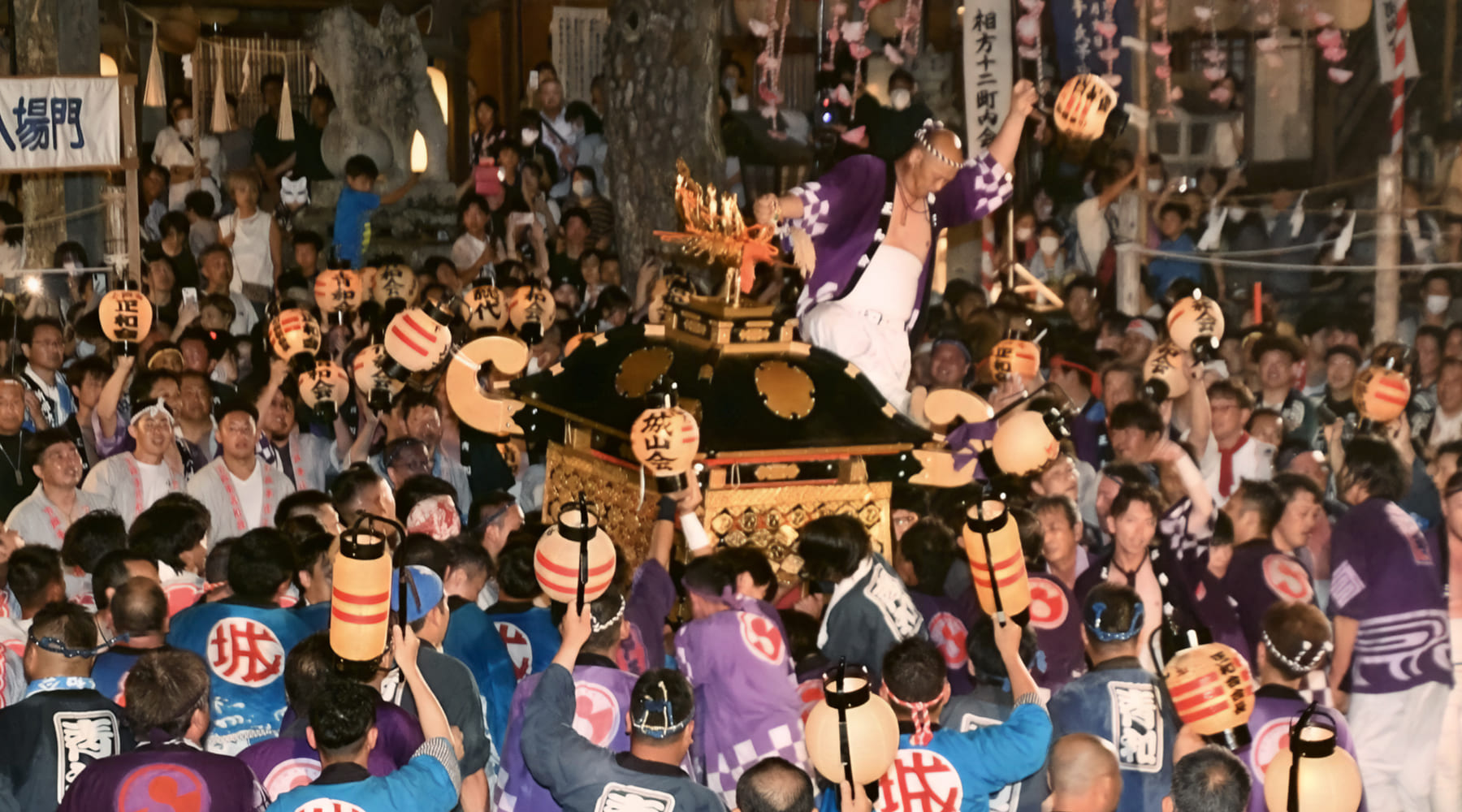
-

御旅所に納まった神輿の前で神楽が奉納されます。 -

境内では、若者たちの熱気あふれる力がぶつかり合う神輿合わせ。 -

境祇園祭の最終日、三体の御輿が40分おきに境内に入場し、
本殿の周り、広場を練り歩き、時として御輿と御輿の勇壮なぶつかり合いが繰り広げられる。
数万人にふくれあがった参拝者は、素盞嗚命の御霊の乗り移った御輿の動きを固唾をのんで見守り、境内は興奮のるつぼと化す。 -

担守(かつぎまもり)
このお守りは神輿の担ぎ棒から作製しております。
「縁起を担ぐ(かつぐ)」「地域を担う(になう)」
そんな願いを込めて担ぎ手の熱い思いが込められております。 -

無言の神事
素盞鳴神社の祇園祭の最終日、三体の神輿が倉に納められて、小一時間後、吉備津神社より、宮司・補宜が参拝します。
素盞鳴神社では神前にお膳五台とひねり御供(ごくう)を準備し、宮司・禰宜・祭員が大床の所定の座に着いて待ちます。吉備津神社の宮司と禰宜は、祝詞に御幣十二本(閏年には十三本)と梅のすはえ(若い小枝)で作った箸を持って参拝します。まず、本殿前で手水を済ませ本殿に参進します。大床に着座している宮司・禰宜・祭員には 一切無言で神前に進み、御神酒を供えて神事に移ります。
この無言の神事がいつ頃から、両社の間で行われるようになったのか、はっきりとはわかりませんが、備中の吉備津神社の分霊を疫隈社 (素盞嗚神社)の領地に吉備津宮として造営したので、吉備津神社より挨拶がありました。
これが現在無言の神事という形で残っています。
茅の輪くぐりChinowakuguri
備後風土記逸文によれば、昔
北海に坐す武塔神が南海の神女のもとに行かれる途中、日が暮れ一夜の宿を求めて、
この地で富み栄えていた巨旦将来の家を訪ねたところ断られました。
次に兄の蘇民将来を訪ねました。
貧しいながらも蘇民は快く一夜の宿をお貸ししました。
時を経て尊は八人の王子を連れて蘇民将来の家に立ち寄られ、
「吾は速須 佐能雄神(すさのうのかみ)なり。
後の世に疫病あらば、汝は蘇民将来の子孫と云いて、
茅の輪を以って腰に着けけたる人は免れるであろう」と 云われ、
巨旦将来を誅滅された伝説が残っています。
尊は温かいもてなしを受けた感謝のしるしとして蘇民将来に「茅の輪」を授けられ、
蘇民の一族は疫病から逃れることが 出来ました。
これが今日に伝わっている茅の輪くぐりの神事の起りです。
今では全国的に行われていますが、
備後風土記逸文に出てくる疫隈 國社は戸手の素盞鳴神社のことで あり、茅の輪神事の発祥の地であります。
Chi no Wa Kuguri(Ring of Grass Ritual)
In the Chi no Wa, held on August 8, worshippers go through a large ring of cogon grass to protect against evil and disease. Because the name of this shrine (Enokuma no Kunitsuyashiro), which appears in the Bingo Fudoki, refers to the present Susano’o Shrine, the Chi no Wa ritual originated here in Shin-ichi, Hiroshima Prefecture.
Long ago, in a mythological age when Susano’o no Mikoto was on his way to the southern sea, he went to Kotanshorai’s mansion and asked for lodging for the night.
Although Kotanshorai was a wealthy man, he refused. His elder brother Sominshorai gave Susano’o a night’s lodging and served him a bowl of foxtail millet in an effort to make his stay as comfortable as possible.
After many years Susano’o no Mikoto visited Somin’s dwelling again and said, “If an epidemic breaks out, make a ring of cogon grass and put it around your waist.
Then you will escape infection.” Based on this myth, it is believed that misfortunes can be avoided by placing an amulet with the name of the house of Sominshorai written on it at the entrance to a home. This also led to the Shinto ritual in which worshippers go though a large ring of cogon grass, praying for good health.
The Chi no Wa ritual is performed on August 8 at Susano’o Shrine.
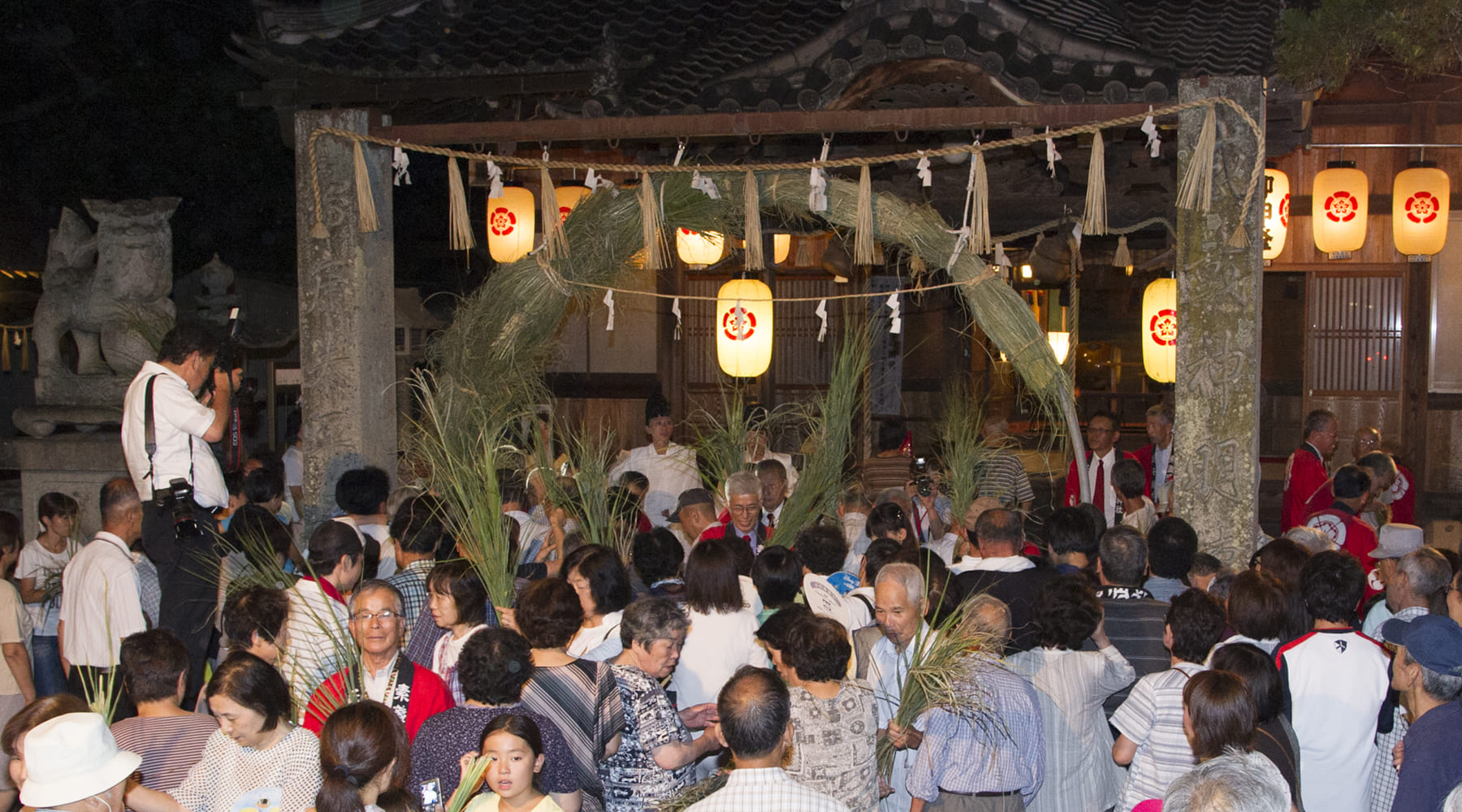
「備後風土記逸文」を基に絵本にしております。
The Story of Chi no Wa
-

-
少し 先の こんもりとした 森の 中に あかりが 見えました。
ちかづいて みると りっぱな やしきが ありました。
この里で 一番の 長者 巨旦将来 の やしきでした。
「こんやは ここに とめて もらおう。」
そう 思うと スサノオの命は そのやしきの 中に はいっていきました。Once upon a time there lived a god named Susano’o no Mikoto. He set out on a journey to look for a bride living in the south. After a long journey during which he went over mountains and crossed rivers, he reached a place called Enokuma no Sato after sunset.
“What shall I do?” he thought to himself, “It would be nice if I could find a place to stay overnight.”
Two brothers lived there. The elder brother, Sominshorai, was very poor. The younger brother, Kotanshorai, was very rich and lived in a large mansion.
-

-
「たびの とちゅうで 日が 暮れて こまっています。 どうか 一晩の 宿を おねがいしたい。」
長い たびで やつれた 貧しそうな スサノオの命の 身なりに 目を やると そのやしきの あるじは
「おまえみたいに みすぼらしい 身なりの たびの者を とめる わけには いかない。
森の むこうに 蘇民将来の 家が ある。 そこへでも行って たのんで みるが いい。」
スサノオの命は しかたなく つかれた 足を ひきずりながら 歩いて 行きました。
くらい 道を しばらく 歩いていくと そまつな つくりの 蘇民将来の 家が ありました。A little way ahead, in a thick wood, Susano’o saw a light. He went up to the place and found a magnificent mansion standing there. The mansion belonged to the richest man in the country. “I would like to stay here for the night,” he thought. He went into the mansion and said, “Would you please give me lodging for the night? As it is already dark I will have difficulty finding a place to stay.”
Seeing the tired, indigent appearance of Susano’o after his long journey, the master of the mansion, Kotanshorai, said, “I won’t give lodging to a man like you. If you go a little farther, you’ll find Somin’s dwelling. Go seek lodging there.” Susano’o no Mikoto trudged on. After walking for a while in the dark, he found himself in front of Somin’s humble dwelling.
-

-
スサノオの命は わけを はなして おねがい しました。
すると 蘇民は
「それは おつかれで おこまりでしょう。 ごらんのように せまい ところですが どうぞ おあがり ください。」
そう言うと さっそく 粟の ごはんを たいて さしあげました。
スサノオの命は 心の こもった 温かい もてなしに
たいそう よろこばれ その夜は 粟柄の ねどこで ぐっすりと お休みに なりました。
つぎの日 スサノオの命は 蘇民に かんしゃをされ たびを つづけられました。Susano’o no Mikoto told Somin that he was having difficulty finding lodging.
Somin said, “You must be tired. Please come in, although our house is rather small.”
No sooner had he said so than he cooked foxtail millet and served it to Susano’o. Susano’o was very pleased with this hospitable treatment and had a sound sleep that night.
The next morning Susano’o thanked Somin for everything and set out again.
-
それから スサノオの命は めでたく およめさんを みつけられ けっこん されました
Susano’o luckily found a bride and got married. Many years later, he set out on a journey along with his children. On his way he dropped in at Somin’s house and said, “I owe you a debt of gratitude. Last time I came here you really helped me out. Since then I have gotten married and have been blessed with children.”
Somin said, “I also got married, and now I live with my wife and daughter.”
-

-

-
何年か たって スサノオの命は 子どもたちを つれて たびに でかけられました。
そして また 蘇民の 家に たちよられました。
「この前は たいへん おせわに なりました。
あの時は ほんとうに たすかりました。 あれから よめを もらって 子どもにも めぐまれました。」
「私も よめを もらって むすめが 生まれたので 今では 三人で くらしています。」Before long in this region people made it a custom to put up an amulet with the name of the house of Sominshorai written on it and a ring of cogon grass over the entrance. They prayed that they would not fall victim to disease.
-
「私は アマテラス大神の 弟で スサノオの命と いいます。
ここにくる とちゅう とおくの 村では おそろしい やまいが はやって おりました。 そのうち この村にも やって くるでしょう。 もし やまいが はやって きたら 『蘇民将来の家』と かいた 紙を 入口に はりなさい。そして 小さな 茅の輪を 作って こしに つけなさい。
そうすれば やまいに かかることは ありません。」
と お教えに なりました。しばらくして 蘇民の 村にも おそろしい やまいが はやってきて 村人は やまいに たおれて しまいました。蘇民は 『茅の輪』の おかげで すくわれたことを よろこびスサノオの命の ふしぎな 力に ありがたく 感謝しました。
そのうち この地方では いつのころからか 『蘇民将来の子孫の家』と かいた お札を はり 『茅の輪』を かけて 悪い やまいに かからないように お祈り するように なりました。


